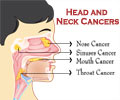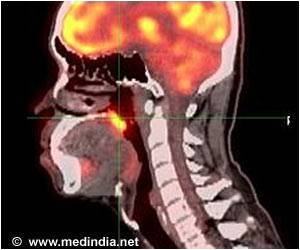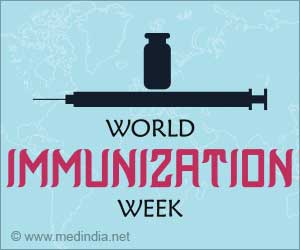Highlights
- Head and neck cancer is difficult to treat because of the involvement of many vital structures, including the ones responsible for breathing, swallowing and speech.
- New study shows that treating such cancers with twice-daily radiation therapy in combination with chemotherapy is effective in improving chances of survival.
- Twice-daily radiotherapy involves splitting the radiation therapy to two times a day to deliver a much higher and effective dose.
Head and neck cancer includes cancers of the oral cavity, nose, throat, sinuses, salivary gland and lymph nodes of the neck. Most of these cancers begin in the moist tissue lining the mouth, nose and throat.
Symptoms include a sore in the mouth that does not heal, sore throat, patches inside the oral cavity, change in voice, trouble swallowing and a lump in the throat or neck.
It is more common in men than women. Around 80% of these cancers can be attributed to tobacco use. Infection with human papillomavirus of HPV also increases the risk of this cancer.
Around 600,000 people are diagnosed with head and neck cancer worldwide each year. These cancers account for 6% of all malignancies in the U.S, where around 110,000 new cases of head and neck cancer are diagnosed annually.
It can be difficult to treat because the area of the body affected contains so many vital structures, including those responsible for breathing, swallowing and speech.
Benefits of Hyperfractionated Radiotherapy
The study, led by Dr Claire Petit, a resident in radiation oncology from Gustave Roussy cancer center in Paris, included patients with tumors in their mouths, throats or voice boxes, that had already begun to spread to neighboring tissue.
The survival rates in patients whose tumors that have undergone metastasis is much lower compared to those in whom the cancer is diagnosed at an earlier stage.
To combine data from 117 different trials, including 28,804 patients from around the world, the researchers used a relatively new technique called a network meta-analysis.
To find out what therapy suited best to reduce the spread of cancer and cut death rates, they compared 16 different treatments.
The results showed that the twice-daily treatment with radiotherapy in combination with chemotherapy, cut deaths by 20% compared to the best standard treatment of once-daily radiotherapy with chemotherapy. It also reduced the risk of the cancer getting worse by 23%.
Dr Petit told the Congress "There are a number of new treatments that have shown promise in head and neck cancer trials. This large study has enabled us to compare several of these treatments to see which is best overall in terms of reducing mortality."
She added "Moreover, the method we used, network meta-analysis, which combines direct and indirect treatment comparisons, is a new method that needs to be interpreted with prudence. However, this is an important finding for this group of patients who have a higher risk of their cancer recurring following treatment."
Professor Philip Poortmans, President-elect of European Cancer Congress , ECCO and head of the Radiation Oncology Department at Radboud university medical center (Nijmegen, The Netherlands), said "This research provides good evidence for the benefits of treating advanced stage head and neck cancer patients with a combination of twice-daily radiation therapy and chemotherapy, compared to one or even none of these separately."
"Moreover, it would be preferable to perform prospective trials to confirm these results. If that is not feasible, or if we cannot wait for their outcome for some subgroups of patients who have the worst survival currently, then we should at least register carefully all the outcome parameters in prospective multi-centre databases so that they are available later on for analysis." Poortmans added.
To improve the quality of life for such patients is very important. Therefore, further research is necessary to explore the short-term and long-term side-effects experienced by patients, either during treatment or later.
"Some of the studies we looked at did not include data on side effects; others did not follow patients long enough to pick up long-term side effects. This will be the focus of more research over the next year." Dr Petit said.
The new research was presented at the European Cancer Congress 2017.
References
- Head and Neck Cancer - (https://medlineplus.gov/headandneckcancer.html/)
- 50 Facts about Oral, Head and Neck Cancer - (http://www.entnet.org/?q=node/1501)
Source-Medindia















